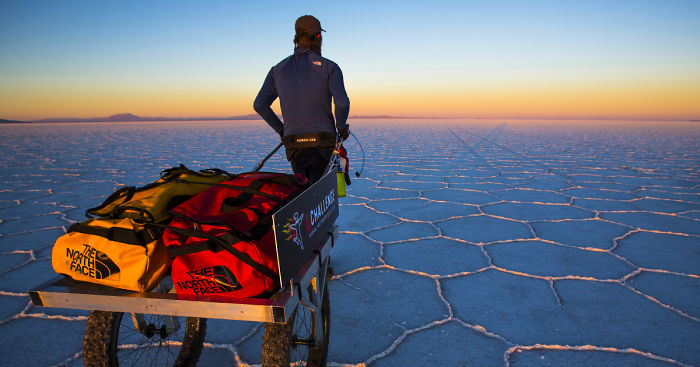
The Story Of My Lonely Walk Across The Largest Salt Desert In The World, salar De Uyuni
In 2015 I have started my adventure in Bolivia. The goal? To cross the world’s biggest salt flat alone. Pulling all the equipment on a cart behind me — unaided.
What for? At times when all decisions are preceded by the inevitable question, “Is it worth it?”, thinking of the purpose of my venture literally made no sense. The vision of the limitless plane of salt merging with incredibly blue sky was all that mattered to me. So little, and yet so much. Please visit my website to discover more adventures.
More info: nakrancach.pl | Facebook
“See that mountain on the horizon? It’s Tunupa. According to legend, she was the woman who married Kusku. But he abandoned her for another, Kusina. While breast-feeding their son, Tunupa started to cry. Her tears mixed with milk and formed the Salar. Simple, isn’t it?”For 26 years, Alfredo has been living on Incahuasi island, in the middle of the greatest salt flats in the world. To him, as well as to other Almara people, this place will always be called Salar de Tunupa. Full of mysticism, rich in legends and traditional beliefs, it does not leave a soul untouched. Perhaps that’s why I’ve been here two times now. The other day, when I was leaving the little town of Llica, the natives were standing on the thresholds of their stone huts, drawn by the uncommon view of a ‘gringo’ (foreigner) pulling a cart. It was beyond their understanding why anyone wish to to cross Salar de Uyuni on foot. To me, this moment was the a beginning of a great adventure set to end in the town of Colchani, one hundred seventy kilometres and approximately ten days later. The goal? To cross the world’s biggest salt flat alone. Pulling all the equipment on a cart behind me — unaided. What for? At times when all decisions are preceded by the inevitable question, “Is it worth it?”, thinking of the purpose of my venture literally made no sense. The vision of the limitless plane of salt merging with incredibly blue sky was all that mattered to me. So little, and yet so much.
It was in the inhospitable Antipodes Islands, in the cold subantarctic waters south of New Zealand, where I caught the bug for desert crossings. Where I began to long for the permanent silence, the undisturbed peace. And that is what Salar de Uyuni is. When the wind doesn’t bother me, the silence is absolute. The only sound breaking it is the crust of salt crunching under my feet. Music to my ears. When you travel by foot through such vast, featureless landscapes, your steps seem to set this dull rhythm, aggravated by dozens of thoughts squirming relentlessly in your head. Ultimately, your march becomes meditation. From dawn to dusk. Day after day. On the morning of the third day, I was greeted by the sun. Its rays helped me warm up my hands, numb from the cold, and light my camping stove. After a few swigs of hot, sweet tea I dared to unzip the sleeping bag. The night has been cold, and a thin layer of frost covers the flysheet. After having had a few spoons of muesli with milk, I put my shoes onto my frozen feet and pack my gear. I have with me a warm, down sleeping bag that can protect me from the cold even when the temperature drops to minus 40 degrees Celsius, a hurricane-proof tent, food, and six ten-litre bags filled with water. There is no way to draw water from any source in the Bolivian Salar de Uyuni. That’s why I pull all my things stacked on a specially designed cart. The wheels have extremely wide tires — the same ones I had used on the Canning Stock Route in Western Australia.
The Salar can also be deceptive. I internalised this risk at the very start — that whatever I may encounter, I would have to face it alone. There is no escape route and a great deal that can happen. Even in the winter, when the weather seems stable, it can turn on you within a few hours.
Four days after my departure from Llica I arrive at Incahuasi island, where I am greeted by its first settler — Alfredo. He tells me the local legend. This small rocky island in the middle of a great sea of salt was once a tip of a volcano. It is overgrown with hundreds of cacti, some of them old enough to remember the Christianization of Poland. From the top of the island, a truly unique view unfolds in front of me. I’ve seen salt flats in many different parts of the world — in Australia, Chile, Argentina. But the vastness of this place overshadows them all. Along with the lakes Titicaca and Poopo, Salar de Uyuni is a remainder of a gigantic Pleistocene lake, Lake Ballivian. It is one of the flattest areas in the world, with an altitude variation of barely 41 centimetres, making it ideal for calibrating GPS devices. During the Bolivian summer it is covered by a thin layer of water and becomes the biggest natural mirror on Earth. An illusion of the horizon blurring and fading between two endless blue planes may once and forever redefine the meaning of ‘INCREDIBLE’ for those who have the chance to witness it.
Theoretically, there is little chance of a snow storm — a perfect killer — like in 2002, when a couple of cyclists were found dead on Salar. If the weather were to break, there are no landscape features that could provide shelter. From being a safe spectator I may, within seconds, find myself in the middle of a great battle between wind and snow.
Having that scenario in mind, as well as all the other thoughts I can’t seem to shake off, makes it even more difficult to walk. But slowly, I start to appreciate the peace surrounding me, free from the burden of a regular day. That peace of mind, when there is no-one to pitch you any BS, like “you need to buy a new TV”, or “this dietary supplement will make you healthy and happy like no other”. And besides: “The best things in life are for free. Free of charge! Don’t you know that? Then your heart must be tainted black”. (Eldo , Miasto Słońca)
One evening I find sizeable cracks in the layer of salt filled with water. Albeit irrationally, I start to feel a bit worried. The salt crust under may feet is at least several metres thick. If it can bear the load of racing ORVs, it can bear my tent. And even though logic seems to be the best advisor, I perform every single hammer hit on the head of a steel nail — the only thing that can go through the concrete hard salt and peg my tent to the ground — with greatest caution.
At night, despite the sharp frost, I step outside. The view of the Milky Way tearing apart the deep blackness of the sky makes me forget about the fear. I take photos. I feel happy.
The next day I notice a line of off-roaders stuffed with tourists on the horizon. They pose the greatest threat to me, especially when I’m camping. Bolivian drivers don’t seem to care much about safety, either on or off road, which leads to many tragedies. Seven years ago, Salar de Uyuni made all the headlines in Israel and Japan. Eleven citizens of those countries had been killed in a head-on collision of two off-roaders. And it was not the first time that the desert silence had been broken by gas tank explosions and the sounds of cars crashing. But did this accident change the way excursions to Salar are organised? No. The authorities of the independent city of Uyuni have set up a memorial pedestal, but meanwhile, 10 billion of salt remain a silent witness to dramatic events.
The sound of camera shutters and car windows rolled down snap me out of meditation. One of many tourist groups decides to take photos of me with their phones. No “hello”. Not a single word. What a nonsense. “I would like to believe, that somebody still cares, that the world is more than Starbucks coffee and iPhones”. (Eldo, Rybałci)
I find the last two days of marching by far the hardest. And it’s not about my lips, dried and cracked by scorching sun, nor the blisters on my feet. Even the altitude of my journey, exceeding 3,500 metres, is not a problem. Only a few days ago I stood on the top of a six-thousander, and I am more than well acclimatised.
Instead, it is the other end of Salar, getting closer. That is the problem. There will always be a special bond between me and deserts. In the end, I am only left to wonder, whether it is possible to: “Travel without a destination, to get there as late as possible, or even… not to get there at all”. I believe that it is.
1Kviews
Share on Facebook
 Dark Mode
Dark Mode 

 No fees, cancel anytime
No fees, cancel anytime 


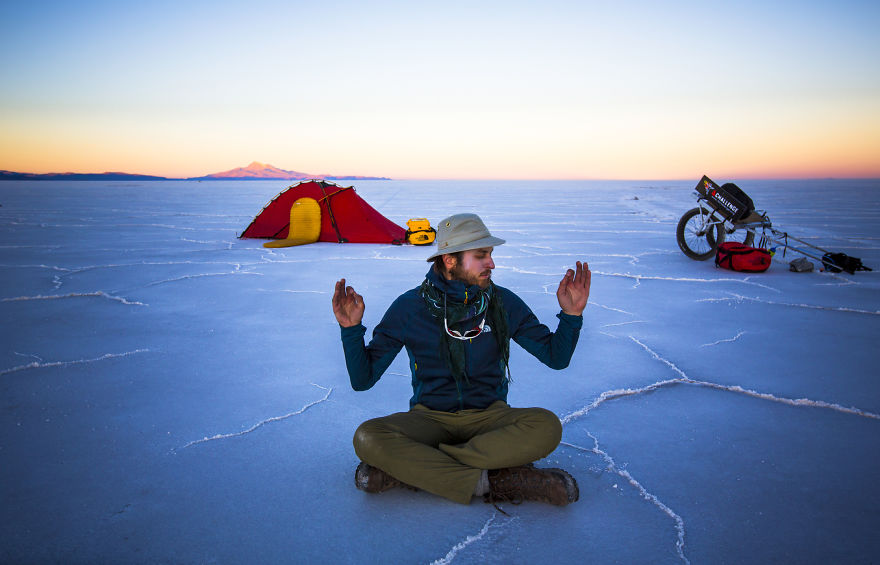
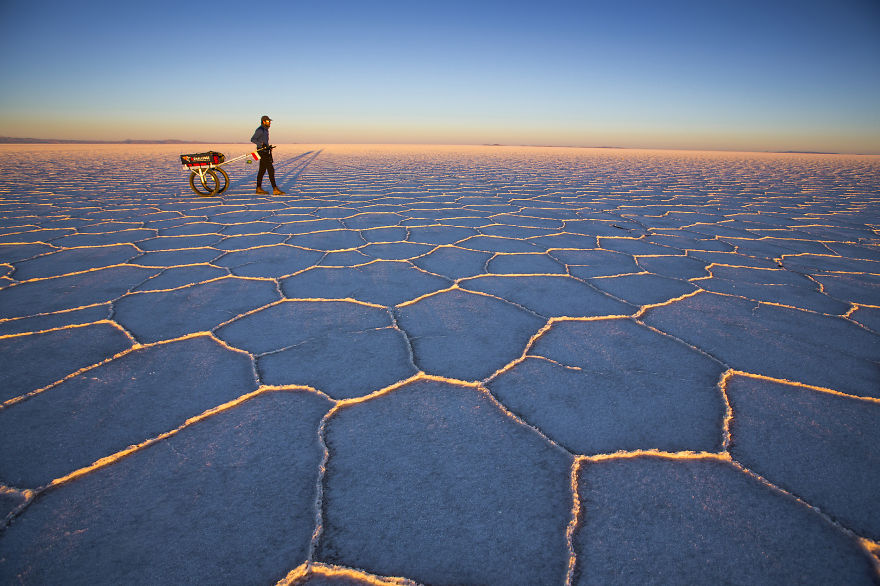
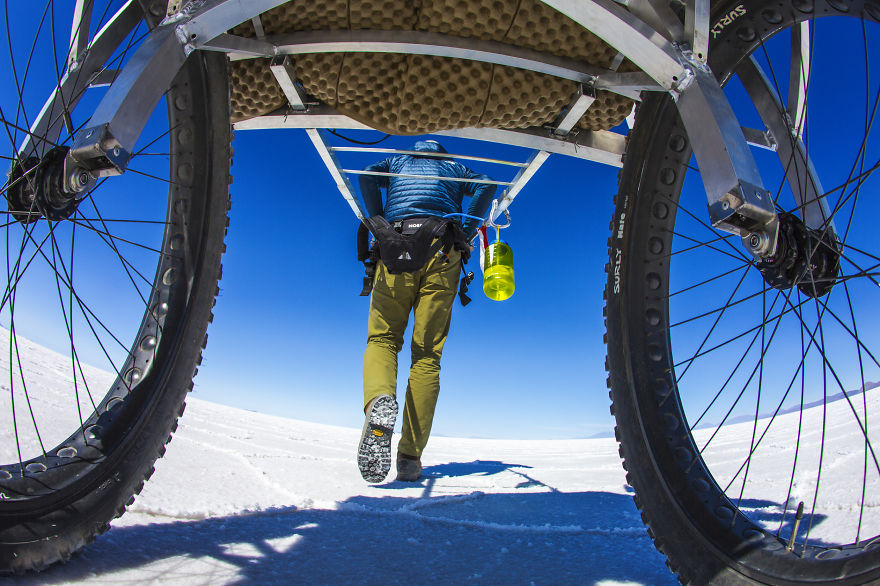
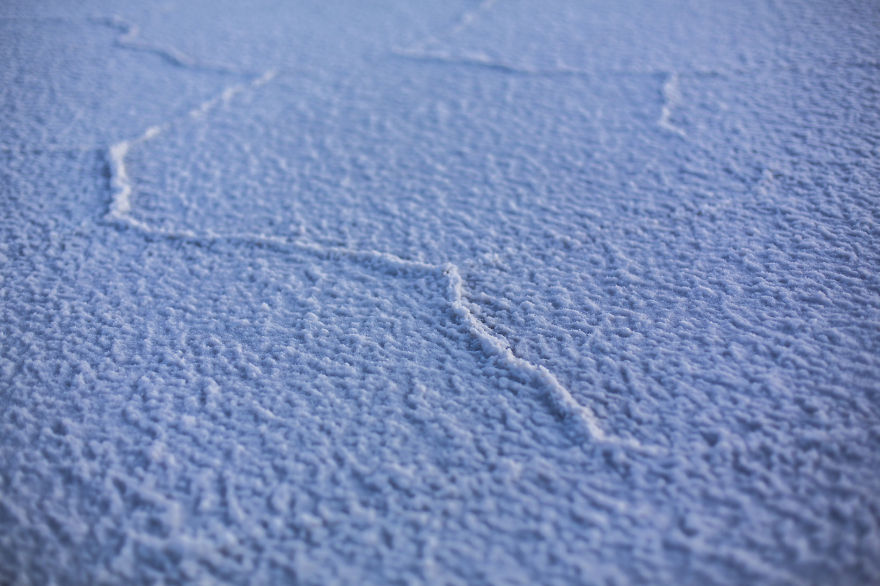
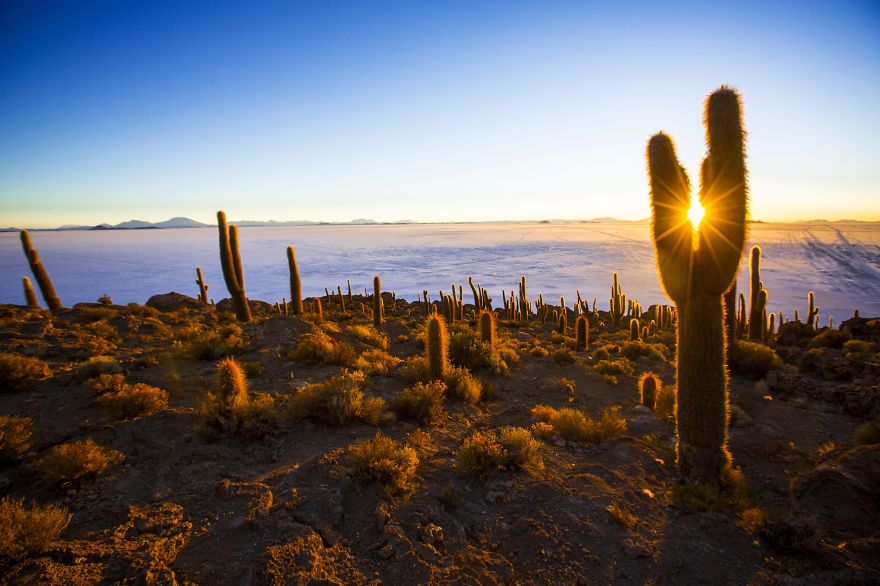

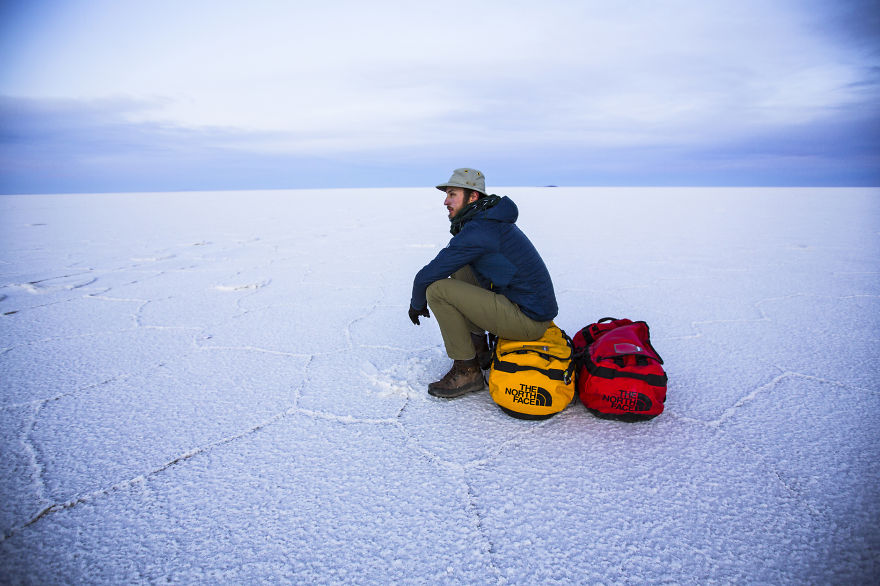
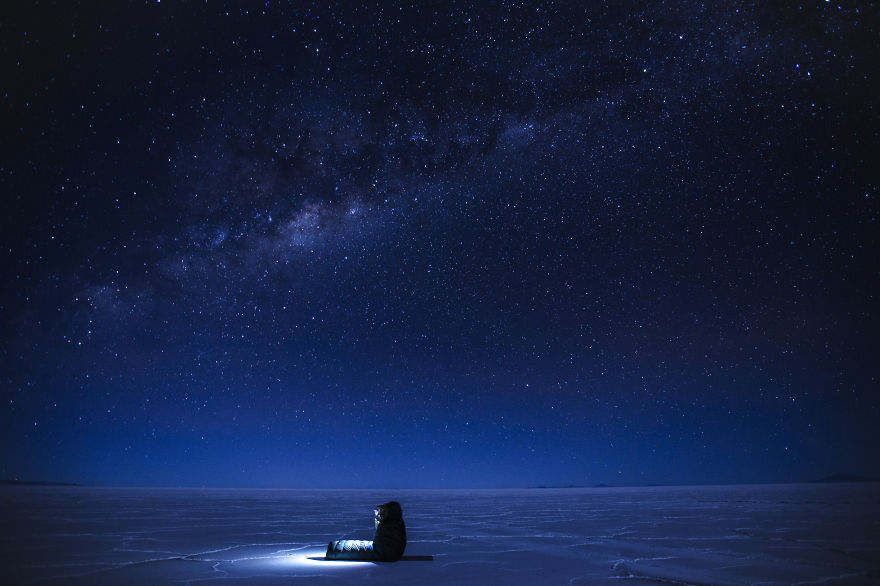

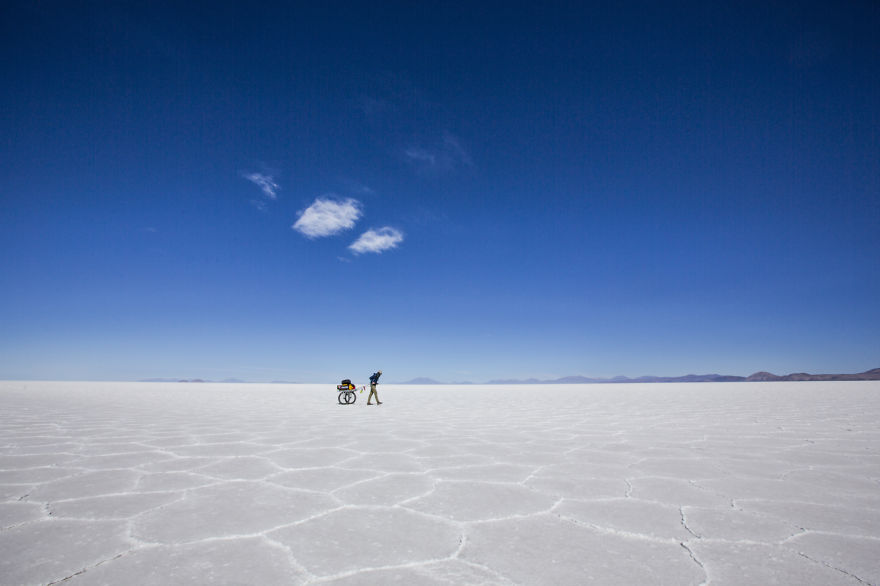
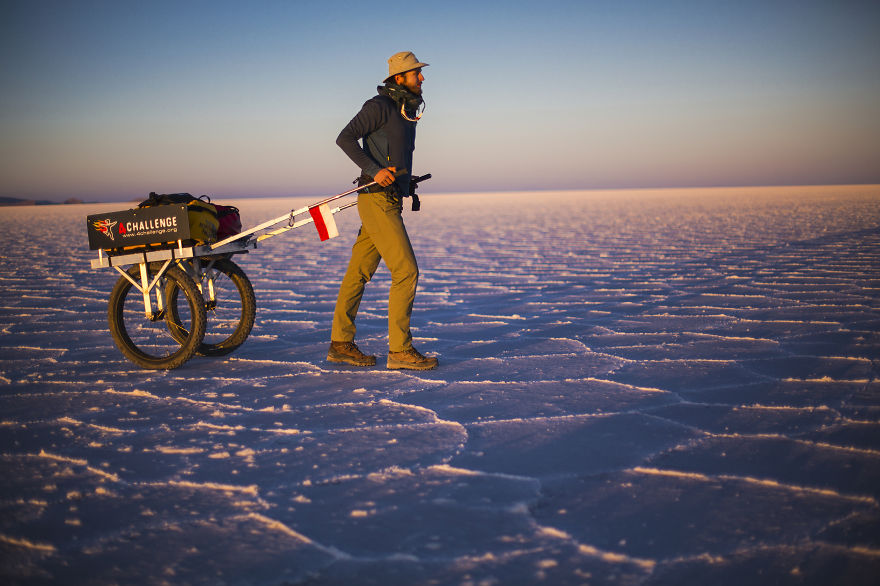
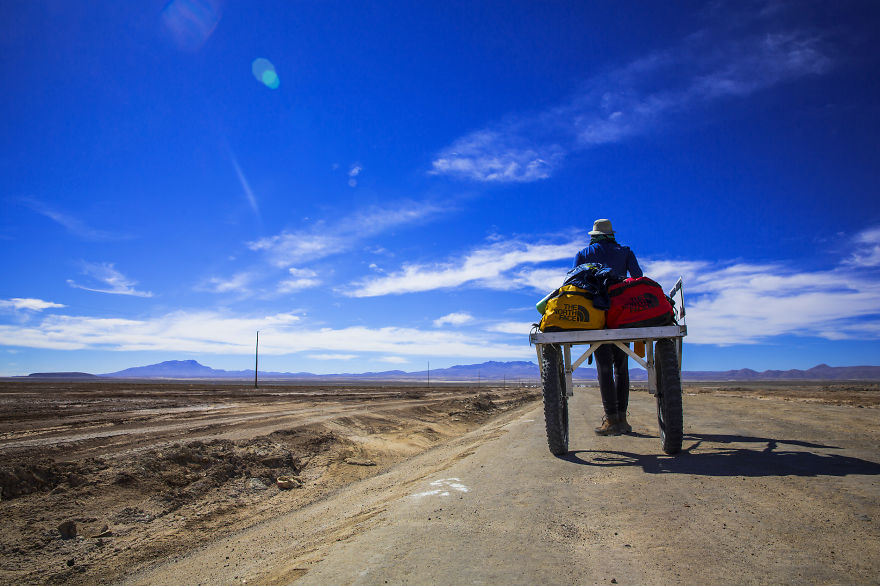






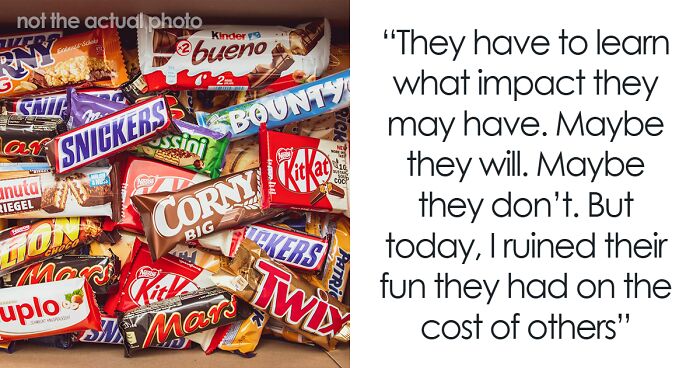










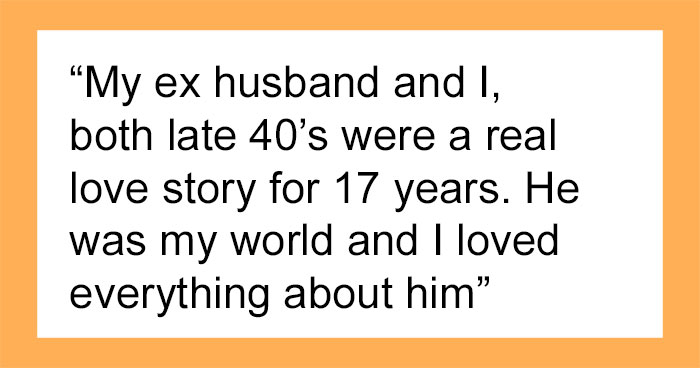



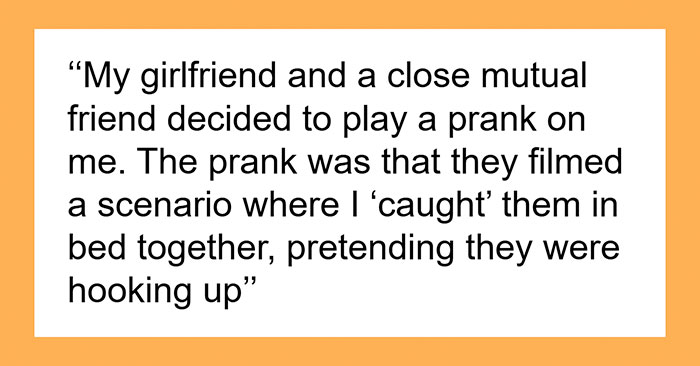



58
1